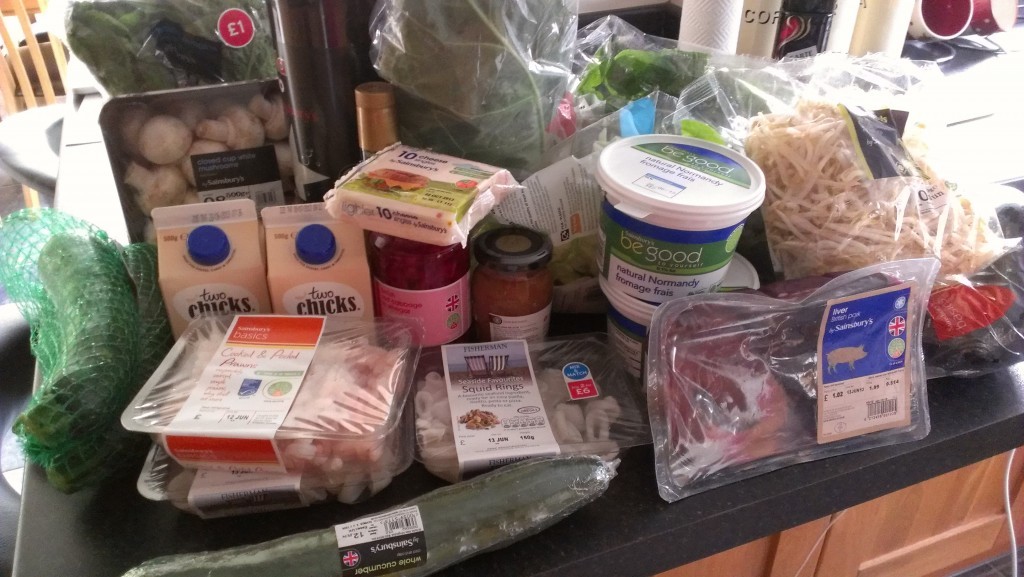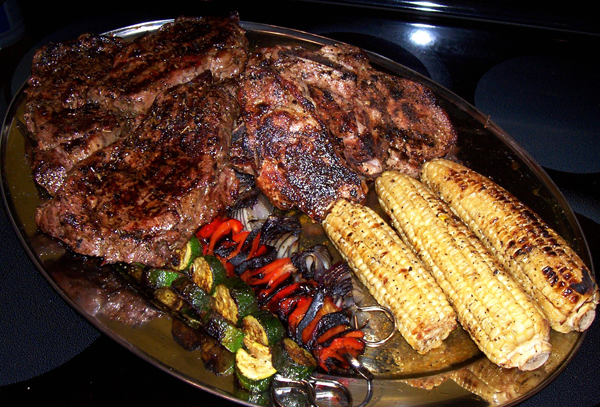The New Rules of IIFYM

IIFYM Re-Defined, Revamped and Reloaded
Healthy Living Heavy Lifting: “IIFYM? That’s the Pop Tart diet, right?”
“Yeah, I’ve heard of that – it’s the one where you try to eat as much crap as possible, then post pictures of it on Instagram.”
Unfortunately, the above is the general conception that most people in the “real world” and even lots in the fitness industry have of IIFYM.
And to an extent, it’s true.
There are those outliers who masquerade as IIFYM-ers, or flexible dieters, who DO go out of their way to cram in as much junk food as they can while still hitting their macros. They neglect fruits and vegetables, don’t give a damn about fibre, and the majority of their food choices aren’t too dissimilar to those of their lazy, fat, out-of-shape office co-workers who they take such joy in judging.
These guys and girls though, do not portray the true picture of IIFYM.
In an attempt to dispel all the myths surrounding IIFYM and flexible dieting, I put together a two-part article that you can check out here –
http://paulnotsmall.com/?p=1124
Before reading this, I strongly recommend checking out both of the above, just to clear up any potential confusion over hitting macros.
Can IIFYM be Improved On?
Debate will rage for centuries to come between the flexible dieters and the clean eaters – what matters more – food quality or food quantity?

Both these extreme approaches have serious flaws.
Firstly, while clean eaters may acknowledge the importance of calories, you still get a large number proclaiming that eating sugar while in a deficit will cause fat storage, that food choices influence insulin sensitivity enough to lead to fat gain, or that you don’t “need” to count calories provided you’re eating healthily.
(Yeah, because that always ends well – http://www.healthylivingheavylifting.com/how-clean-eating-made-me-fat-but-ice-cream-and-subway-got-me-lean/ )
Then, taking a pot shot at my own team – the flexible dieters, there are those who disregard the importance of nutrient density, and shout that there’s no difference between 200 calories from a steak and 200 calories from Skittles.
I cringe when I hear this, as while it may be a small minority of my own crowd who hold these beliefs, they do give the rest of us a bad name.
What we need to do, is take the good points from clean eating – ie. picking mostly nutrient-dense, “natural” foods, and combine it with the good points from IIFYM – the tracking, logging and structure.
IIFYM: Mark II
I devised a new name. (Hey, look at me!) One which encompasses EVERYTHING a solid diet need. Instead of IIFYM, we’re looking at IIFYM + MFINS –
IIFYM + MFINS =
If
It
Fits
Your
Macros
+
M = Micronutrients. Basically, get your fruits and veggies and eat plenty of whole foods.
F = Fibre. This is VITAL for optimal health and body composition. Check out my post on fibre here – http://www.healthylivingheavylifting.com/fibre-not-just-for-pooping-good/
IN = Individual Needs. Basically, if a certain food or food group makes you feel crap, don’t eat it. If you love dairy and tolerate it fine, fill your boots. Same with grains, beans, etc. If you suffer from sensitivities, allergies, bloating, tiredness from eating certain things though, DON’T EAT THEM.
S = Schedule. Meal timing kind of matters. A good pre-workout meal may give you some more energy, likewise a good post-workout one can help recovery and stop you from feeling jittery later. Find what meal frequency fits your schedule and genetics, and roll with it.
The New Rules of IIFYM
I hate rules-based diets.
You know me, I jump on the Paleo-bashing bandwagon, shout down these gluten-free diets (for non-celiacs) and promote incorporating foods that you enjoy into your diet, but I do think IIFYM needs some “rules.”
(Note: Seasoned flexible dieters will almost certainly do all of these already, but newcomers to IIFYM may need these for guidance.)
1. Set a MINIMUM Fibre Intake
If you didn’t read the above article on fibre, go back and take a look.
As a general rule of thumb, I like people to consume at least 12 grams of fibre per 1,000 calories.
Eating 2,000 calories per day? That’ll be a MINIMUM of 24 grams.
Eating 3,500 calories per day? That’s a MINIMUM of 42 grams.
You get the picture.
Minimum is capitalised, as I’m a big believer in getting more fibre. There is an upper limit, and this varies from person to person, but generally most women can go up to 45 to 50 grams and men up to 60 to 70 grams with no negative effects.
2. Eat a Wide Variety of Food
Variety, as they say, is the spice of life.
Different foods contain different vitamins and minerals.
Broccoli, for instance is considered a nutritional powerhouse, and rightly so. But does that mean your only vegetable should be broccoli?
It does contain 148% of your RDA for vitamin C in just 100g, but that amount also only has 3% of your RDA for iron, and 10% for vitamin B6.
100g of liver, however? That’ll give you 129% of your daily iron needs, and 100g of sunflower seeds has 67% of your recommended daily allowance for that vitamin B6.

It’s the same for every other food too –
So called “superfoods” all contain a load of good stuff, but you can’t just rely on one or two to give you everything you need.
Pick a variety of fruits and veggies, different protein sources (meat, fish and dairy) and switch up your carbs and fats too.
3. Eat at Least 5 Servings of Veggies (Plus an Optional 2 Fruit)
I’m a veggie whore and I don’t mind admitting it.
As per the last point, veggies are awesome, and while I certainly wouldn’t recommend an entirely vegan diet (and if I ever do, you have my permission to shoot me) most people don’t eat enough veggies.
Sure, you can get your fibre from grains and your vitamins and minerals from supplements, but why would you?
Vegetables provide these in their natural form, and are highly satiating too. You can eat a huge bowl of veggies for not many calories at all, but feel extremely full and satisfied.
5 servings would be my minimum recommendation, but once again, you can go higher.
Fruits are optional, but beneficial.
The reason why fruits are optional is because they tend to be higher in calories and carbs than veggies.
There is absolutely nothing wrong with fruits – even the sugar/fructose that there’s so much fear mongering over. But eating fruit depends to a degree on your calorie allowance.
If you’re eating 300g+ carbs per day, I’d 100% recommend having a few servings of fruit as part of this. If you’re toward the end of a cut however, and your carbs are down in the sub 100 or sub 150g range, personally, I’d rather fill up on veggies, and still eat some starches, which means fruits go out the window.
I’ll have some berries most days, and maybe the odd plum, kiwi, or an apple, but you can bet there’s no way I personally want to give up half my carb intake for a banana and some pineapple.
4. Get Your EFAs
I used to be big on the whole “you gotta get your fish oil” thing.
Now?
Not so much, but I still think it’s important.
If you eat oily fish 3 or 4 times per week, I’d say you’re probably going to do just fine. If not, 2 to 3 grams of a fish oil supplement certainly wouldn’t go amiss.
5. Pick MAINLY Wholegrains
In the overall context of a diet, if calories, protein, fibre and essential fats are evenly matched, white/refined carbs hold no benefit over wholegrains.
That being said, focusing mainly on wholegrain carbs is an easy way to ensure you’re getting adequate fibre.
Once again, it comes down to the idea of budget.
If you’re a macronator, shoving down carbs all day long, you’ll probably hit your fibre targets without much effort, and can eat a good whack of processed, refined carbs along the way without any issues.
Low macros? Those wholegrains will be far more filling and enable you to get enough fibre in.
It does come down to personal preference too though, so don’t feel like you HAVE to eat only brown rice, wholewheat pasta and wholegrain bread – the white stuff is all good too, just keep an eye on that fibre intake.
6. Avoid Extreme Meal Timings
The notions that you need to cut carbs by a certain time, not eat before bed, or split your meals into six to eight smaller ones each day to “stoke the metabolism” is not only false, but absurd.
IIFYM doesn’t carry any guidelines over meal frequency, but that doesn’t mean that meal timings don’t matter.

By not placing any limits on when you eat, many people see this as an excuse to adopt some crazy schedule, where they only eat one huge meal each day.
Usually, it isn’t the case that a person does this because it fits their schedule, rather because they simply want to justify a binge. (While I realise it’s perfectly possible to eat just one meal per day and still make progress, I’d argue it’s not optimal, and encourages an unhealthy attitude towards food.)
My one recommendation to clients is regardless of what eating schedule fits their lifestyle, I want them to eat protein every five to six waking hours to optimise protein synthesis. (1)
That means that even if someone wants to go a bit crazy and save all their carbs and fats until a huge evening feast, I still want them consuming at least 20 to 30 grams of protein in the morning, again at lunch, and possibly once more mid-afternoon.
Additionally, completely fasting pre-workout and then not eating anything for several hours after you’ve finished training will also likely compromise performance and recovery.
There isn’t a magic 30-minute post-workout window, and you can train fasted if you so wish, but don’t take it to the extreme.
7. Stay away from foods that make you feel crap
I love the fact us flexible dieters don’t place stupid restrictions on food groups. We can eat dairy, gluten and grains.
Hell, we even eat sugar, drink alcohol and have no set limits on sodium.
While contextually, these are all fine in your diet, it’s not an excuse to go and gorge on them.
Just because you CAN eat sugar, doesn’t mean this should be your primary carbohydrate source. Likewise, if you actually don’t feel too brilliant after eating a lot of wheat, even though you might not be intolerant to it, you may still be best to avoid it.
Crazy, right? Avoiding foods that make you feel bad – who’d have thought it.
8. Be Moderate
Above all, moderation reigns king.
Junk food, the aforementioned wheat, gluten and dairy, meals out, alcohol – all fine, provided you’re sensible.
1 pizza?
A couple of beers?
A bowl of ice cream?
All A-ok.
A full-on blowout? Not so much.
The Wrap Up
It might not be a rules-based diet, but there are still guidelines that apply when employing IIFYM.
It’s very much “common sense nutrition” –
Eat mainly non-processed, nutritionally rich foods, but include nutrient-void foods that you enjoy in an appropriate quantity.
References: